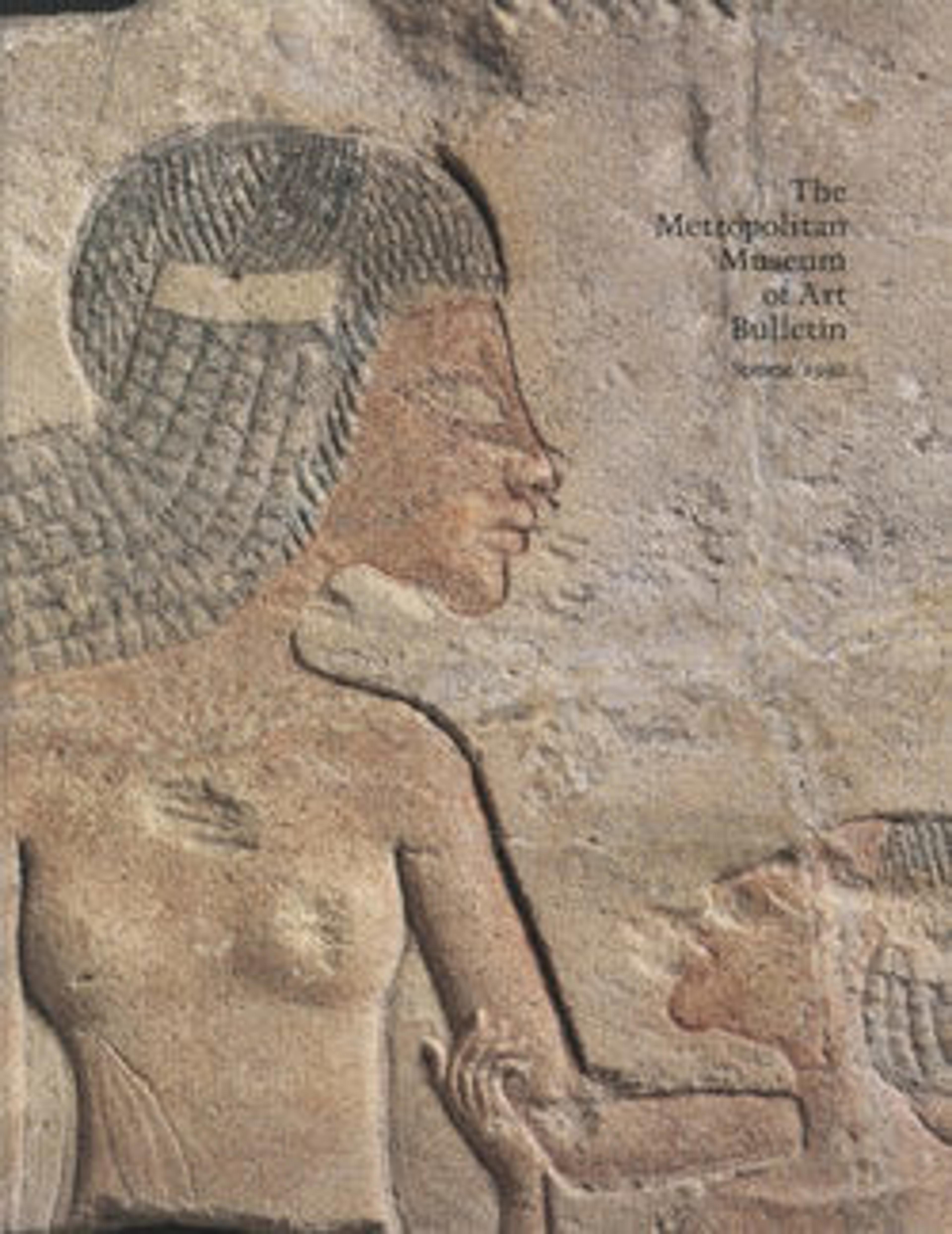Horses Harnessed to a Chariot
Numerous representations of horse-drawn chariots are included in the official scenes at Amarna. Both the king and queen are shown driving themselves in what appears to be a mad dash to the Great Temple, their attendants racing behind. In its way, the arrival by chariot, in the view of the populace, constitutes a kind of procession that replaces the processions of divine images in traditional Egyptian religion.
Throughout Egyptian history, artists took great care in depicting animals, a tradition that was continued and expanded during the Amarna period. On this fragment, a pair of horses are at rest, probably waiting outside the entrance to the temple for the reemergence of the royal family. The artist has depicted the instant one horse nibbles at its leg. This capturing of a moment in time, though not found exclusively in the art of Amarna, probably would not have appeared in a ceremonial context in any other period of Egypt
Throughout Egyptian history, artists took great care in depicting animals, a tradition that was continued and expanded during the Amarna period. On this fragment, a pair of horses are at rest, probably waiting outside the entrance to the temple for the reemergence of the royal family. The artist has depicted the instant one horse nibbles at its leg. This capturing of a moment in time, though not found exclusively in the art of Amarna, probably would not have appeared in a ceremonial context in any other period of Egypt
Artwork Details
- Title: Horses Harnessed to a Chariot
- Period: New Kingdom, Amarna Period
- Dynasty: Dynasty 18
- Reign: reign of Akhenaten
- Date: ca. 1353–1336 B.C.
- Geography: From Egypt; Probably from Middle Egypt, Hermopolis (Ashmunein; Khemenu); Probably originally from Amarna (Akhetaten)
- Medium: Limestone, paint
- Dimensions: H. 22.9 (9 in); W. 52.1 (20 1/2 in); Th. 3.8 cm (1 1/2 in)
- Credit Line: Gift of Norbert Schimmel, 1985
- Object Number: 1985.328.18
- Curatorial Department: Egyptian Art
More Artwork
Research Resources
The Met provides unparalleled resources for research and welcomes an international community of students and scholars. The Met's Open Access API is where creators and researchers can connect to the The Met collection. Open Access data and public domain images are available for unrestricted commercial and noncommercial use without permission or fee.
To request images under copyright and other restrictions, please use this Image Request form.
Feedback
We continue to research and examine historical and cultural context for objects in The Met collection. If you have comments or questions about this object record, please contact us using the form below. The Museum looks forward to receiving your comments.
